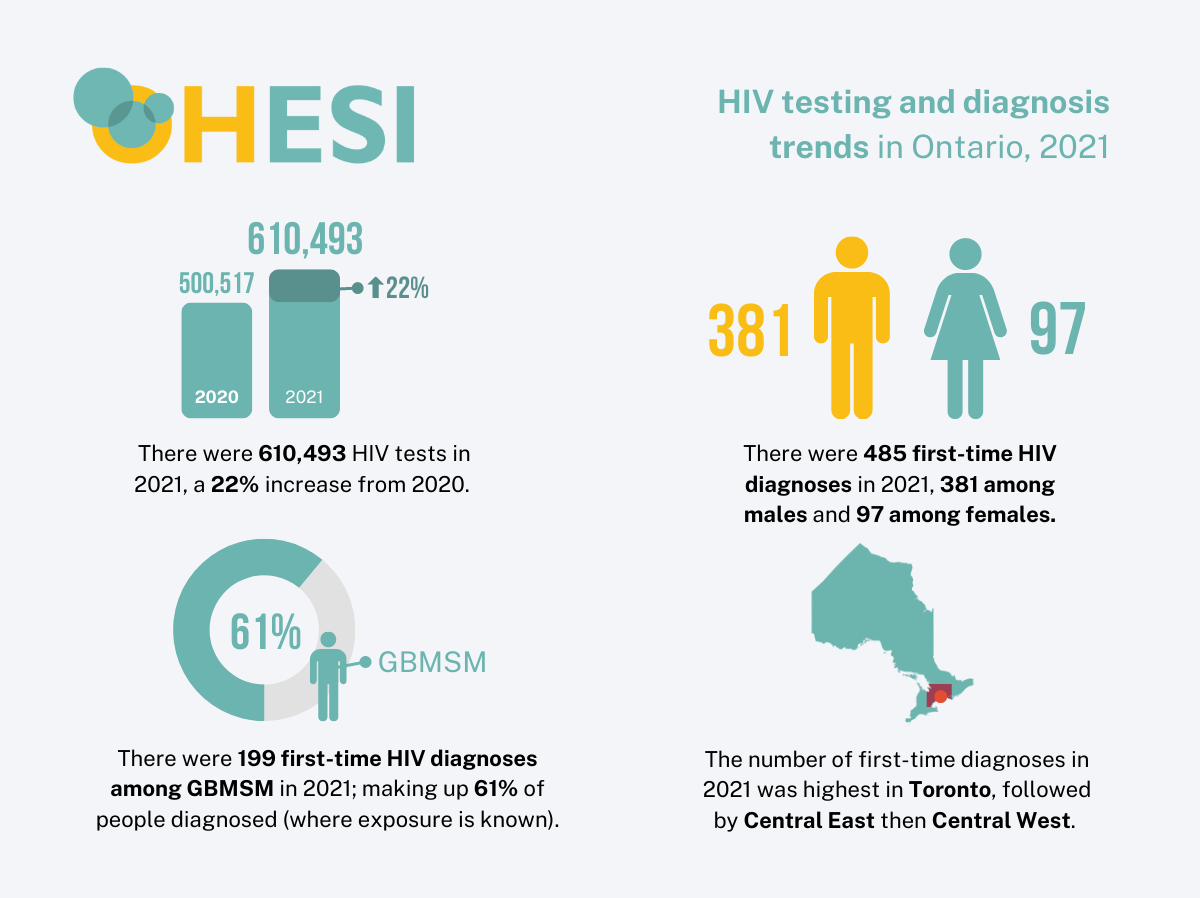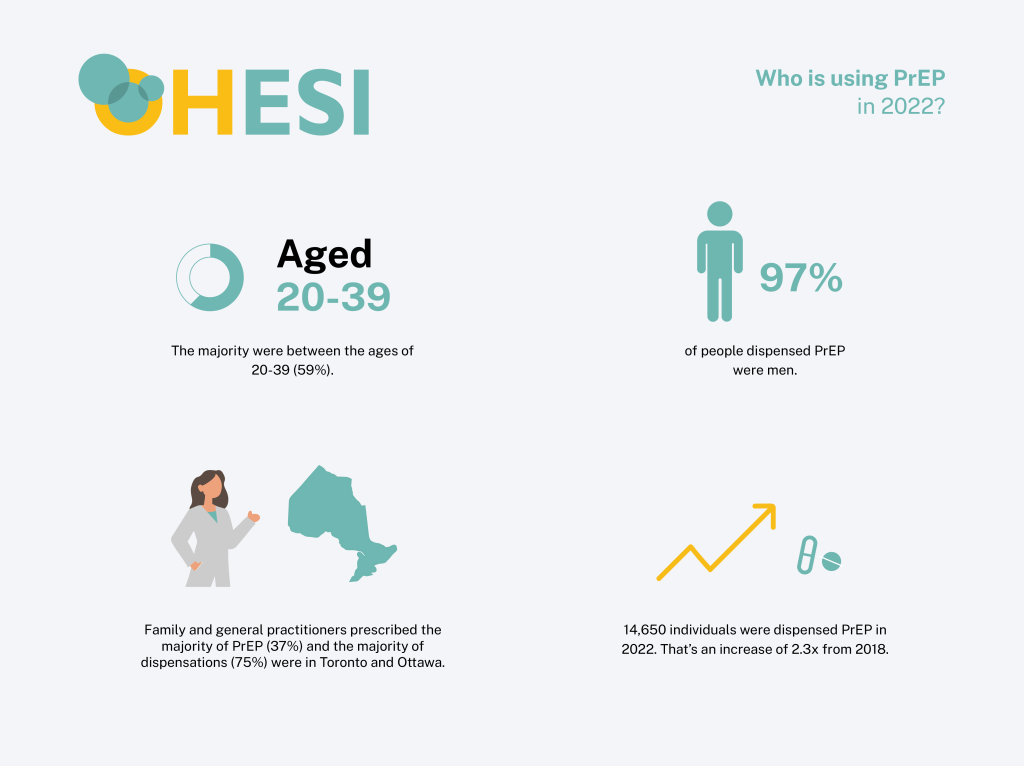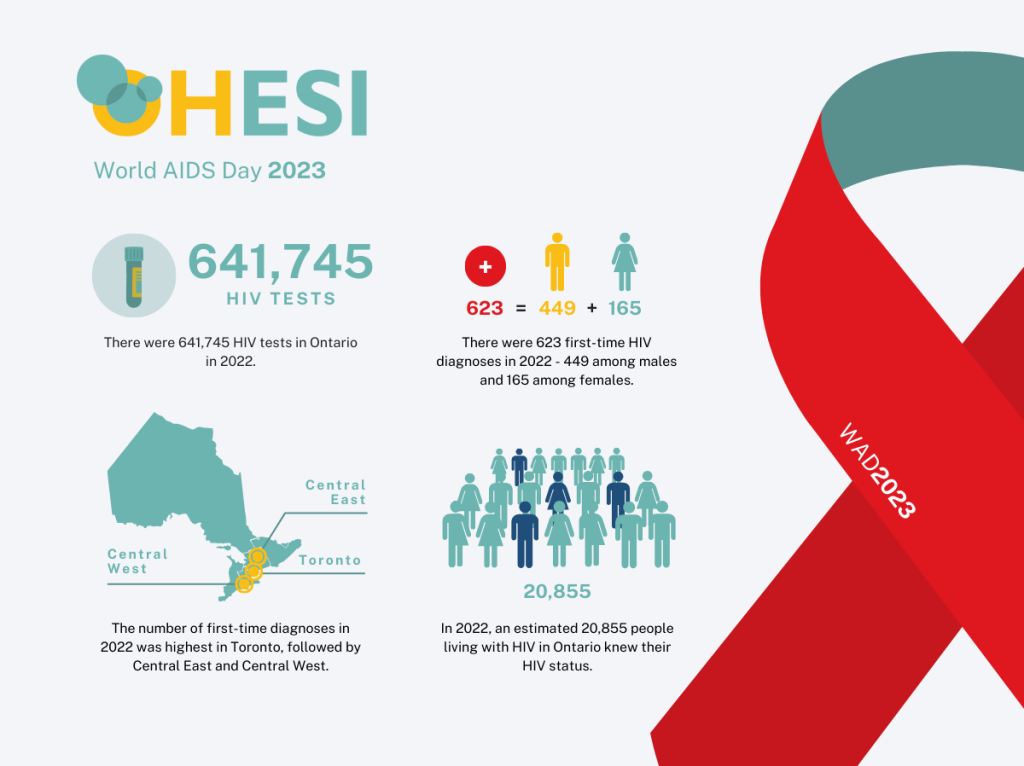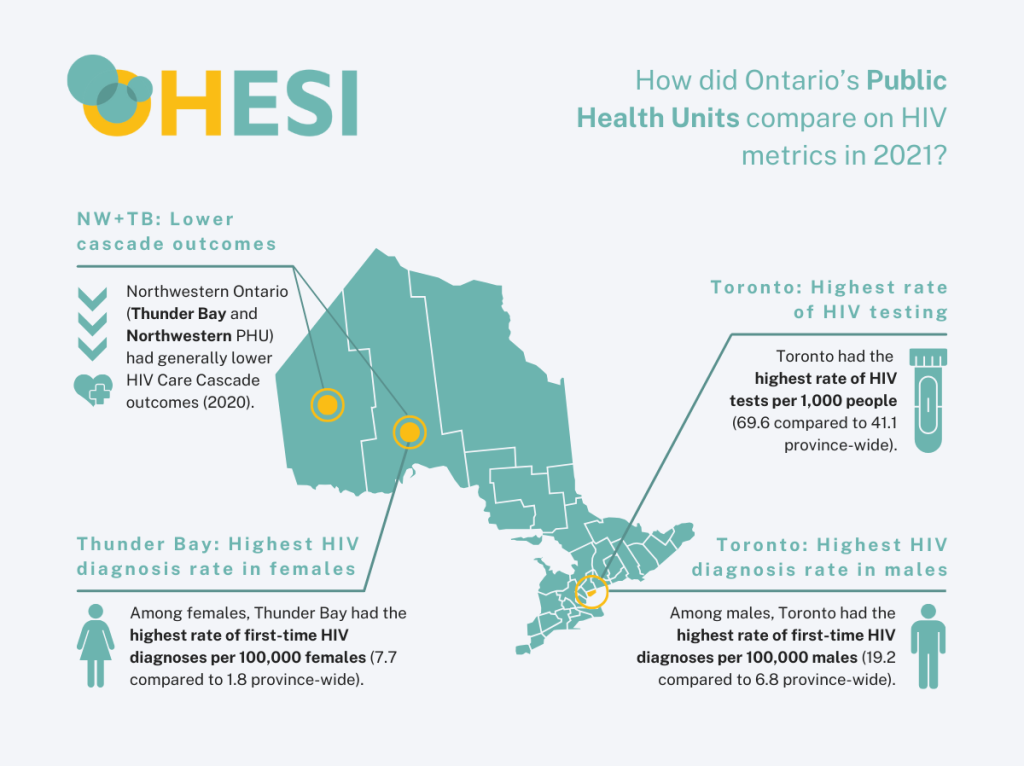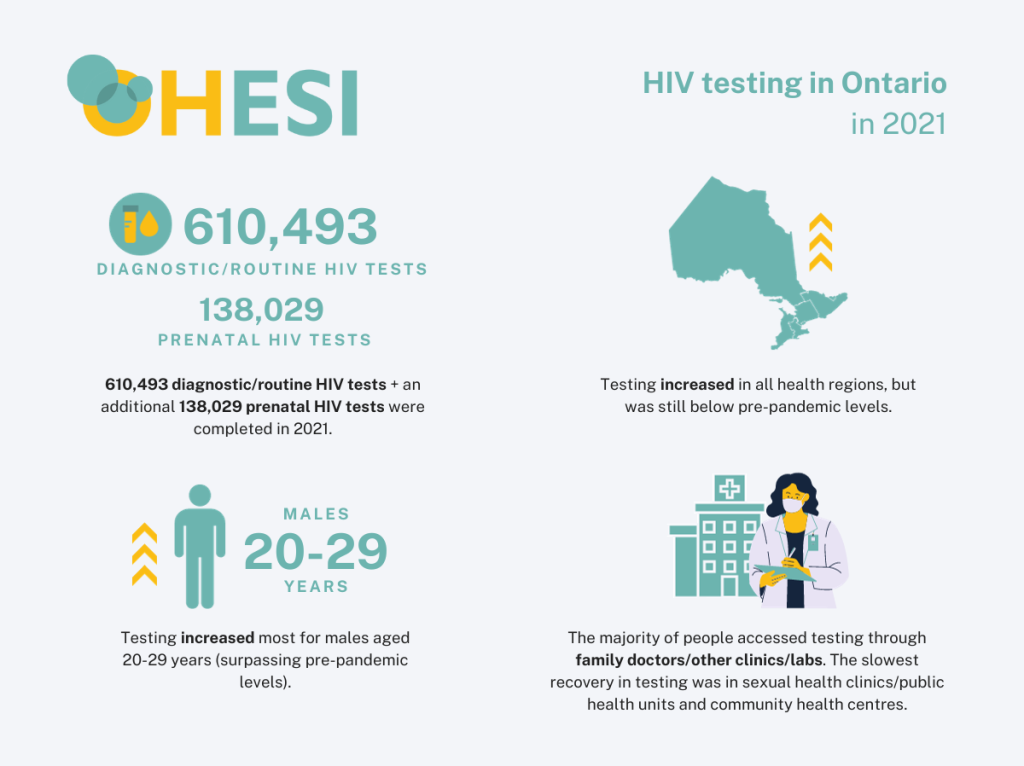Dec 1st, 2022
Trends in HIV testing and diagnoses in Ontario in 2021
In 2021, the COVID-19 pandemic continued to disrupt access to health services and affect migration and sexual behaviour patterns which, in turn, had an impact on HIV testing and diagnoses.
HIV testing up in 2021 but still below pre-pandemic levels
- The total number of HIV tests (excluding prenatal tests) increased by 22% in 2021 (610,493) compared to 2020 (510,517), but was still down 10% from its 10-year high in 2019 (677,779).
- HIV tests (excluding prenatal tests) were up in both males and females [1] but still below pre-pandemic levels and did not increase equally across testing providers.
- Prenatal testing numbers were consistent with previous years (183,847 in 2019, 180,614 in 2020 and 179,990 in 2021)
Figure 1: Number of HIV diagnostic tests (excluding prenatal tests) in Ontario, among males and females, 2012 to 2021
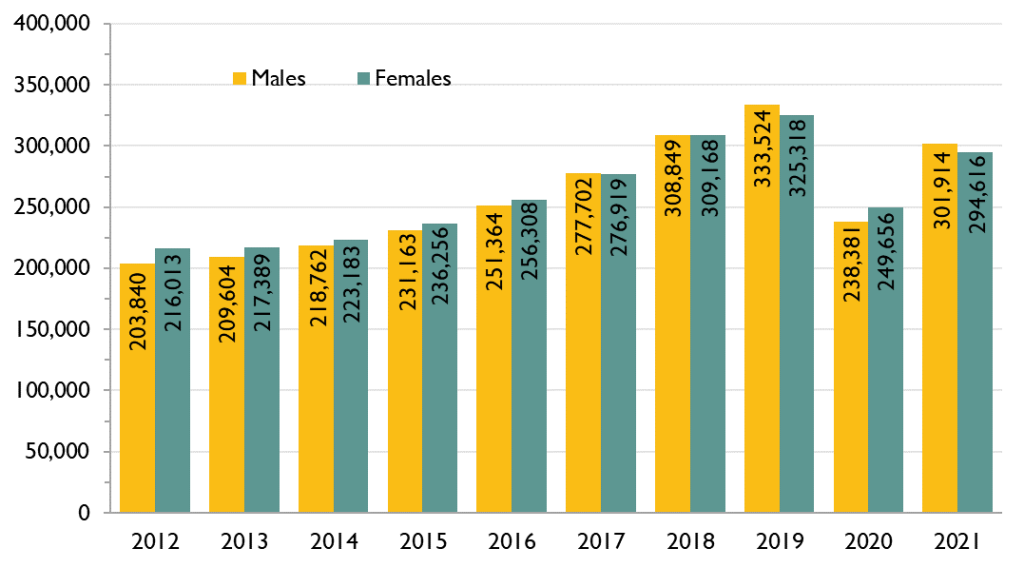
First-time HIV diagnoses down to some of the lowest levels of the HIV epidemic
- There were 485 first-time HIV diagnoses in 2021 – 381 among males and 97 among females
- The number of first-time HIV diagnoses [2] decreased by 26% in males between 2019 (514) and 2021 (381) and decreased by 42% among females between 2019 (167) and 2021 (97) – likely due to a combination of: a drop in new infections (less HIV transmission), missed diagnoses due to decreased access to testing, and fewer diagnoses misclassified as first-time diagnoses due to decreases in migration. [3]
- The number of positive HIV tests in persons with previous evidence of HIV [4] dropped 53% among males and 60% among females between 2019 and 2021 – likely due to fewer people already diagnosed with HIV moving to Ontario and entering care.
Figure 2: Number of first-time HIV diagnoses and positive tests in persons with previous evidence of HIV among males and females, in Ontario, 2012 to 2022
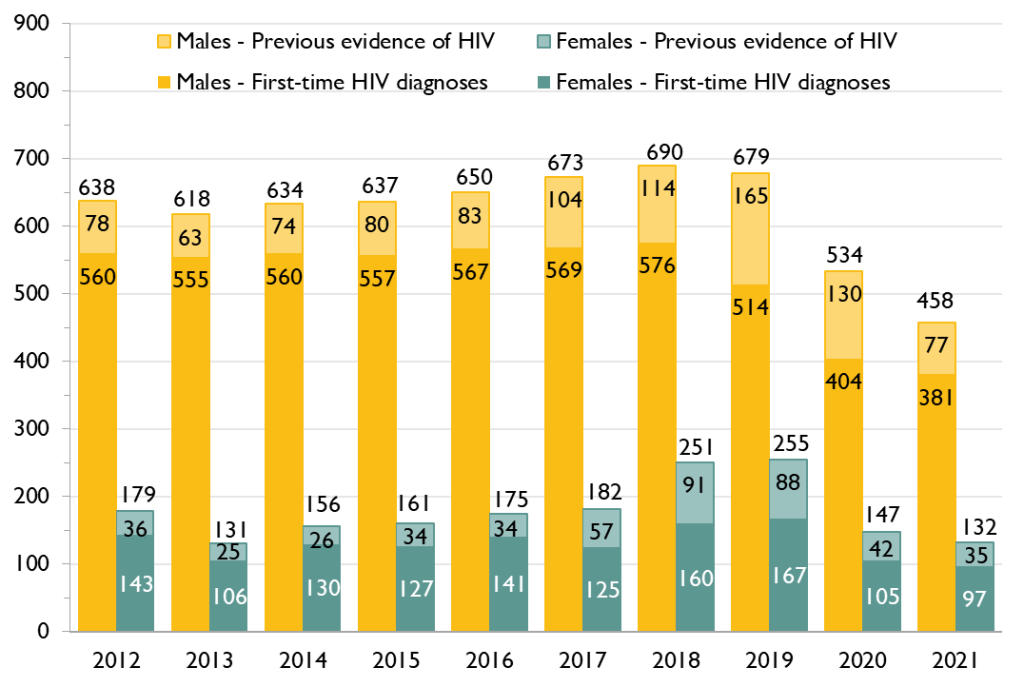
Key populations saw a drop in first-time HIV diagnoses between 2019 and 2021 with the bulk of the drop in 2020
Key populations are not mutually exclusive and therefore a diagnosis from a single individual can be assigned to more than one population. However, when we examine first-time HIV diagnoses that could be assigned to one ore more key populations (80% in 2021), we see that:
- Gay, bisexual, and other men who have sex with men (GBMSM) continue to account for the greatest number of first-time HIV diagnoses; however, there was a significant drop in first-time diagnoses in this population in 2020 and then a smaller drop in 2021. In addition to missed diagnoses due to decreased HIV testing and less misclassification of fist-time HIV diagnoses due to changes in migration, this decrease is likely due in part to a true drop in new infections (less transmission), owing to a 7.5-fold increase in the number of Ontarians on HIV pre-exposure prophylaxis (PrEP) between 2016 and 2021 (forthcoming PrEP report; OHTN). Males who identify as GBMSM make up a large proportion of those on PrEP
- African, Caribbean and Black (ACB) males saw a year over year decrease in first-time HIV diagnoses between 2019 and 2021 while ACB females, male and female people who use injection drugs (PWID) and Indigenous males and females saw a decrease in first-time HIV diagnoses in 2020 and then either a stabilizing or small increase in 2021.
Figure 3: Number of first-time HIV diagnoses by key population, males in Ontario, 2019 to 2021
Gay, bisexual, and other men who have sex with men (GBMSM)

Males who are African, Caribbean, or Black (ACB)

Males who use injection drugs (PWID)

Indigenous males

Males known to not be in any key population

Males where key population information is unknown

Figure 4: Number of first-time HIV diagnoses by key population, females in Ontario, 2019 to 2021
Females who are African, Caribbean, or Black (ACB)

Females who use injection drugs (PWID)

Indigenous females

Females known to not be in any key population

Females where key population information is unknown

Toronto had highest rate of first-time HIV diagnoses and largest decline in the last 3 years.
- Toronto, Ottawa, Eastern and South West regions all saw a decrease in the rate of first-time HIV diagnoses per 100,000 people in 2021 compared to 2019.
- While Toronto continues to have the highest rate of first-time HIV diagnoses, the rate decreased by 47% between 2019 and 2021.
- First-time HIV diagnosis rates in Ottawa, Eastern and South West regions were down by 23-25% between 2019 and 2021. There was no change in the rate of first-time HIV diagnoses in the Northern region while Central West saw an increase in the rate in 2021 compared to 2019.
Figure 5: Rate of first-time HIV diagnoses per 100,000 people, 2019 through 2021, by Ontario region

For a more detailed analysis of trends, see the forthcoming 2021 Testing and Diagnosis reports. The most recent reports on HIV diagnoses and testing in 2020 can be found here. We will continue to monitor the impact of the COVID-19 pandemic on testing, diagnosis and treatment.
[1] Ontario’s limited data on testing in transgender and non-binary individuals is not included here. A more detailed analysis will be provided in the forthcoming HIV diagnoses report for 2021.
[2] People receiving an HIV diagnosis for the first time
[3] Each year, some people with previous evidence of HIV are misclassified as first-time diagnoses because of missing information on their test history.
[4] People who already knew their HIV status at the time of a first HIV test in Ontario (i.e. people moving to Ontario or have a history of viral load testing)

